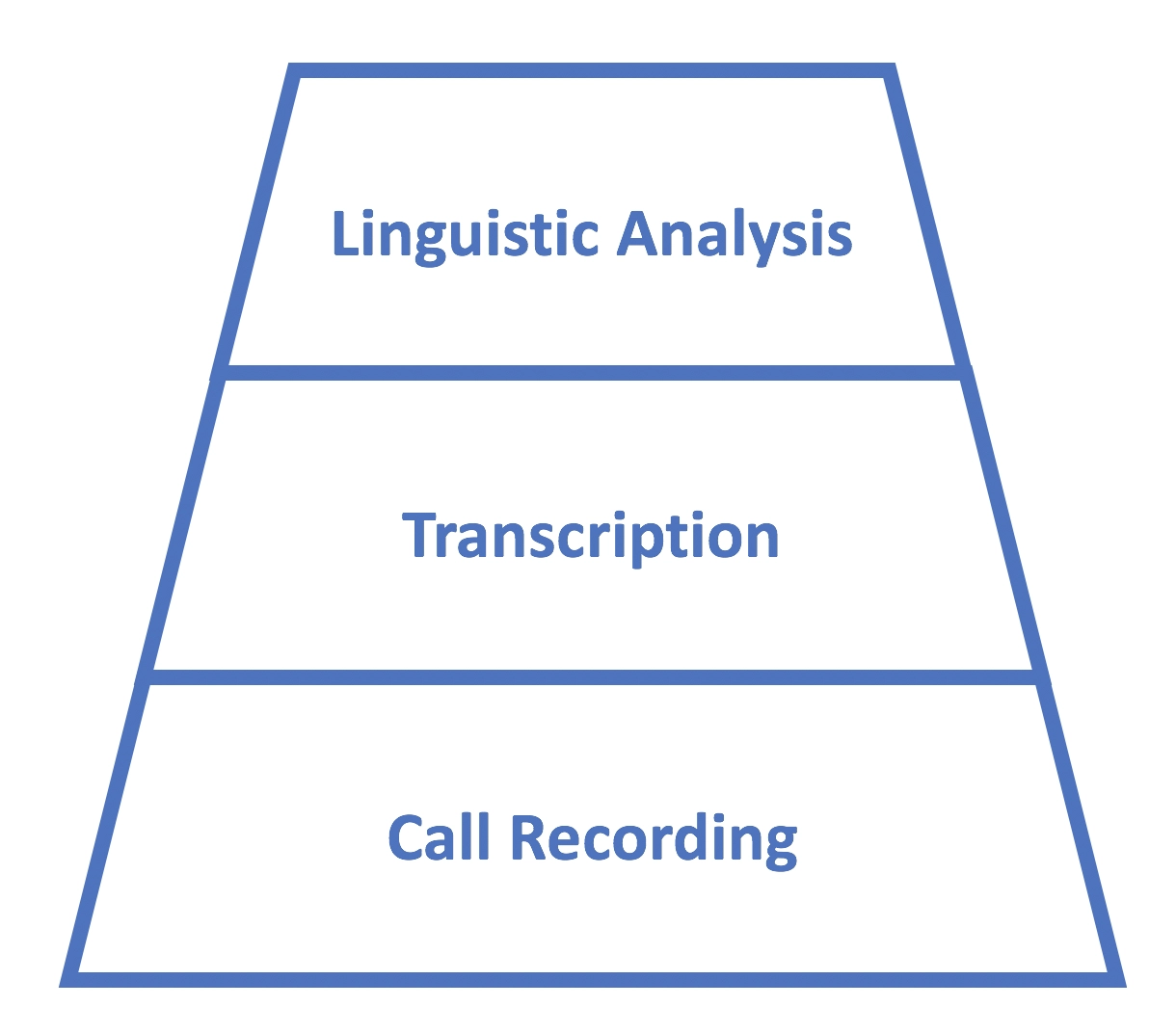Your Genesys Blog Subscription has been confirmed!
Please add genesys@email.genesys.com to your safe sender list to ensure you receive the weekly blog notifications.
Subscribe to our free newsletter and get blog updates in your inbox
Don't Show This Again.

Over the next few years, the recording of all interactions between agents and customers, the full transcription of those interactions, and various forms of analyses are going to be the new table stakes for contact centers. While this will provide to more accountability of the companies using these technologies, there’s still the question of what it will mean for the employees serving as the contact center agents. Two possibilities are that it will create a more stifling work environment or help agents improve through performance insights and training.
The Hierarchy of Interaction Analytics
If we look at interaction analytics as a hierarchy with bases that build up, we’d start with the formative layer of call recording, followed by call transcription and, on top of that, linguistic analysis. This latter category could include entity and intent recognition, phrase and topic spotting, and sentiment analysis, among other analyses. One can argue that a separate layer for acoustic analysis could fit on top of call recording.

With each layer, we’re able to extract more information about what happened on a call. By climbing up the hierarchy, especially through sentiment analysis, we’re more likely to answer questions about an agent interaction:
Answers to these questions can help a supervisor or coach train an agent to improve in their work or learn from others’ successes. However, without the bases in place, a coach’s work can be overwhelming, requiring listening in live to dozens of live calls per day.
“This call is being recorded…”
Call recording frees up coaches from having to listen in live on a call, and opens up the possibility for proper quality management. Calls can be listened to at a faster or slower rate than real time (reasonably, up to 1.5x speed), paused or replayed. With quality management tools, calls can also be annotated and scored. Agents are then able to view this grading and at their own pace, potentially listen to calls to hear where they did well and where they can improve. On its own, call recording also empowers agents to accurately update their notes from a call.
Recording a call can also provide an agent with the ability to highlight and share what they feel are their best conversations. They might be particularly proud of how they overcame an objection or diffused a hairy situation on a particular call. With call recording, they can showcase such calls to their supervisor, rather than hoping that their supervisor listens in on a particularly good call at just the right time.
Reading Between the Lines
Call transcriptions open the door to a new level of analysis. Instead of needing to listen to an entire conversation, a supervisor, coach, or agent can quickly search to a particular section of a call where they discussed something of relevance. This allows for much faster quality management and a more manageable record of calls. When a transcript is combined with a media player that can play back the recorded audio, it can help correct any inaccuracies in speech recognition.
With transcription, agents and supervisors can quickly verify the accuracy of information recorded in notes or review information entered into different fields. This can reduce after–work or allow the agent to concentrate more on the call and listening to the customer, rather than on note–taking.
Transcriptions also enable deeper analysis of the calls. Phrases and topics can be extracted from a call to confirm whether an agent provided disclaimer information, followed a script during an objection or asked the required questions as part of a call. By having a system analyze the interaction, rather than a human, the information on compliance can be presented back to the agent in a way that doesn’t put agents at odds with their supervisors. Supervisors can be there to provide more coaching rather than policing script adherence. For the agent, it’s the equivalent of using a speedometer to check their speed, rather than driving through a police speed trap.
Take a Sentimental Journey
One of the newer applications of linguistic analysis in contact centers is sentiment analysis. With this tool, it’s possible to see whether utterances spoken by a customer or agent are positive, negative or neutral. It’s then possible to group these together to get an overall sentiment score for a call or to determine how the sentiment changes throughout a conversation.
Post–call, agents can see how their talking points affected the sentiment of the customer, whether certain responses led to particular reactions, and whether they were able to either maintain a positive sentiment from a customer or move it from negative or neutral to positive. This can provide agents with super-human capabilities — helping them understand better how their words influence conversations.
Putting It All Together
Together, call recording, then transcription, then linguistic analysis , together, have the power to enable contact center agents to perform much better. They provide a basis for self-evaluation and improvement, sharing agents’ best performance with peers and supervisors, and giving unbiased feedback so that agents can improve. Deployed properly, with a direct advantage to employees instead of as just another tool for management oversight, they create a more motivated and capable workforce.
Read the full Frost & Sullivan report on how to engage your team for the best customer experience. And read more to find out why Gartner recently named Genesys as a Visionary in Workforce Engagement Management.
Subscribe to our free newsletter and get blog updates in your inbox.